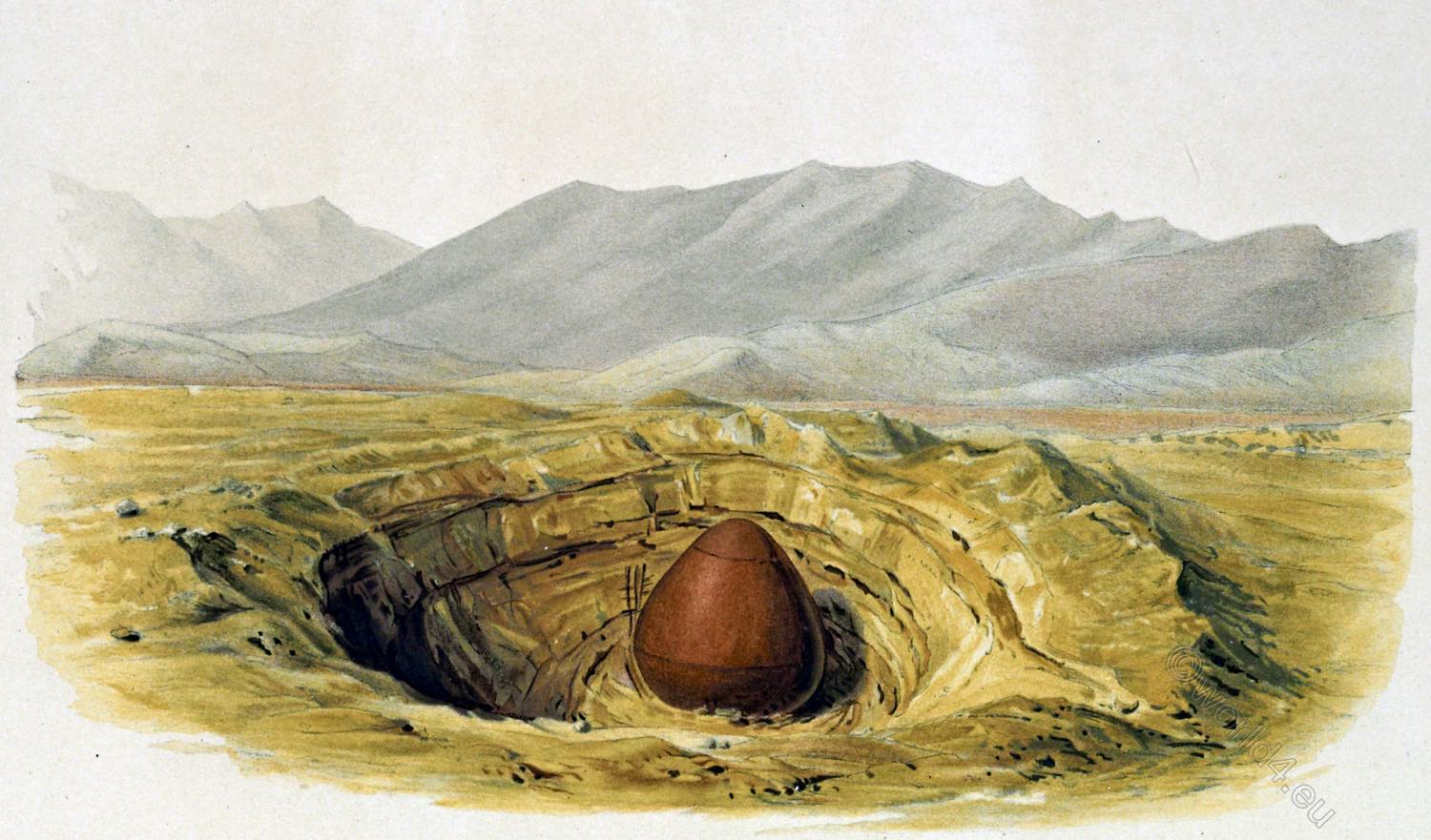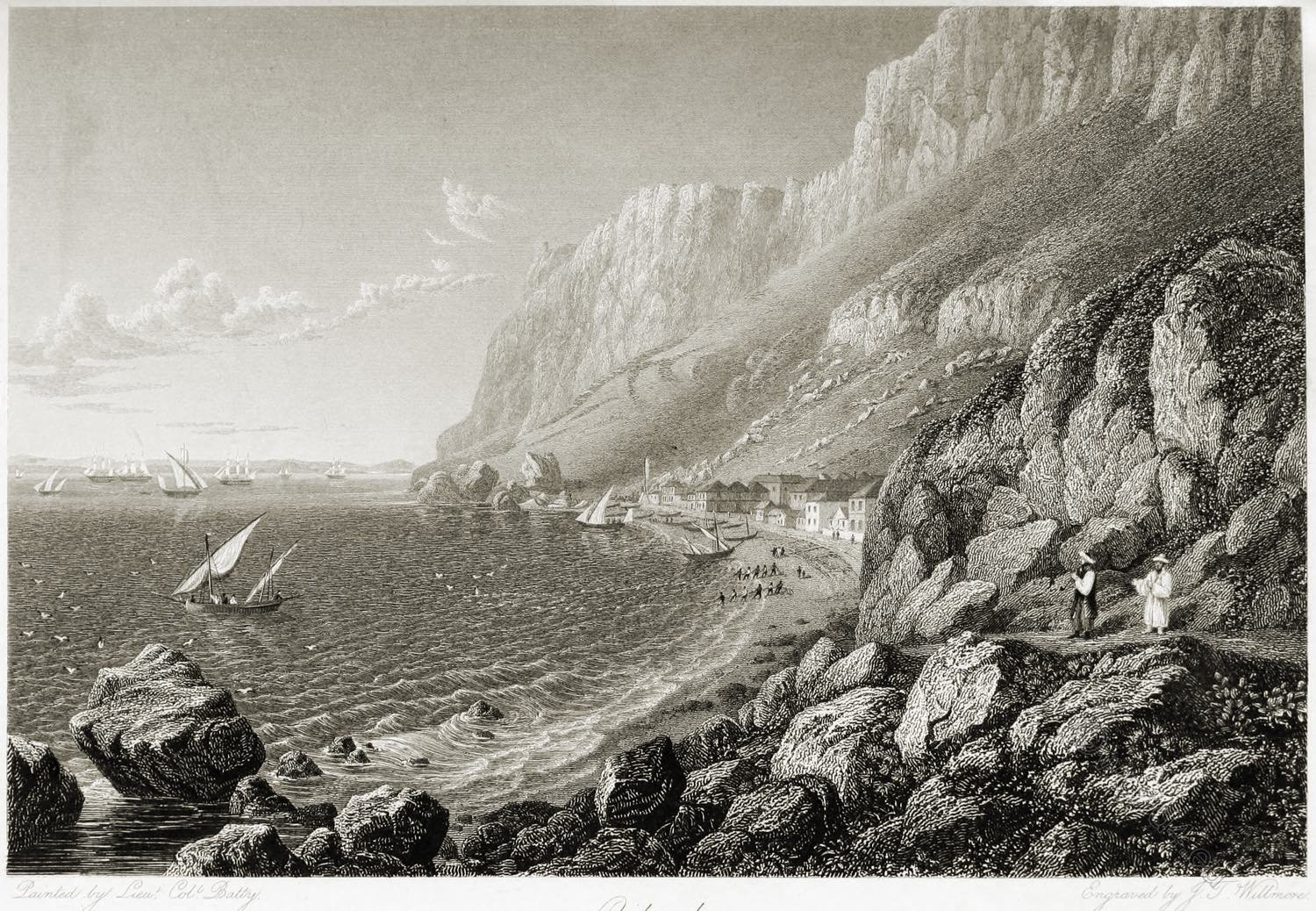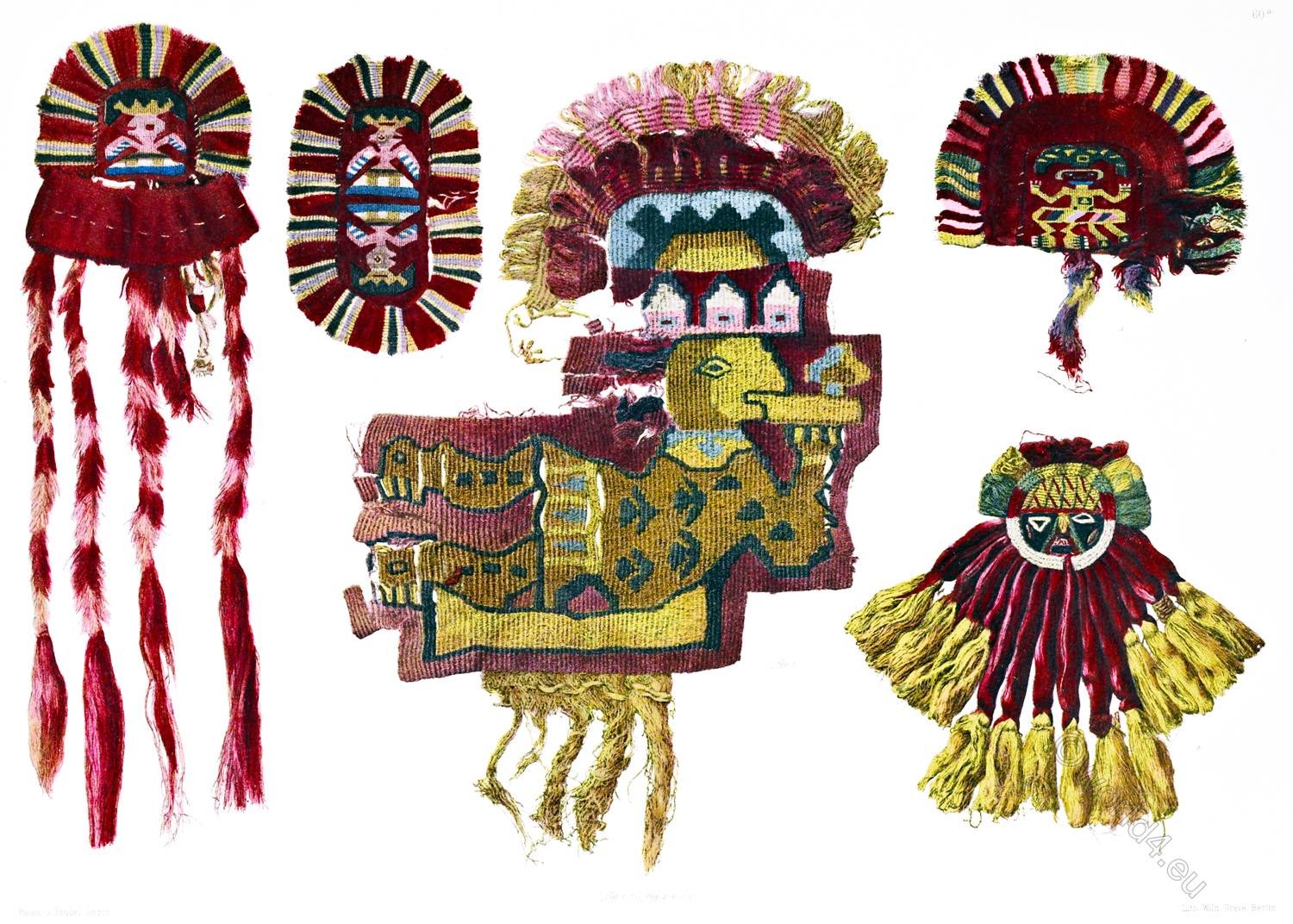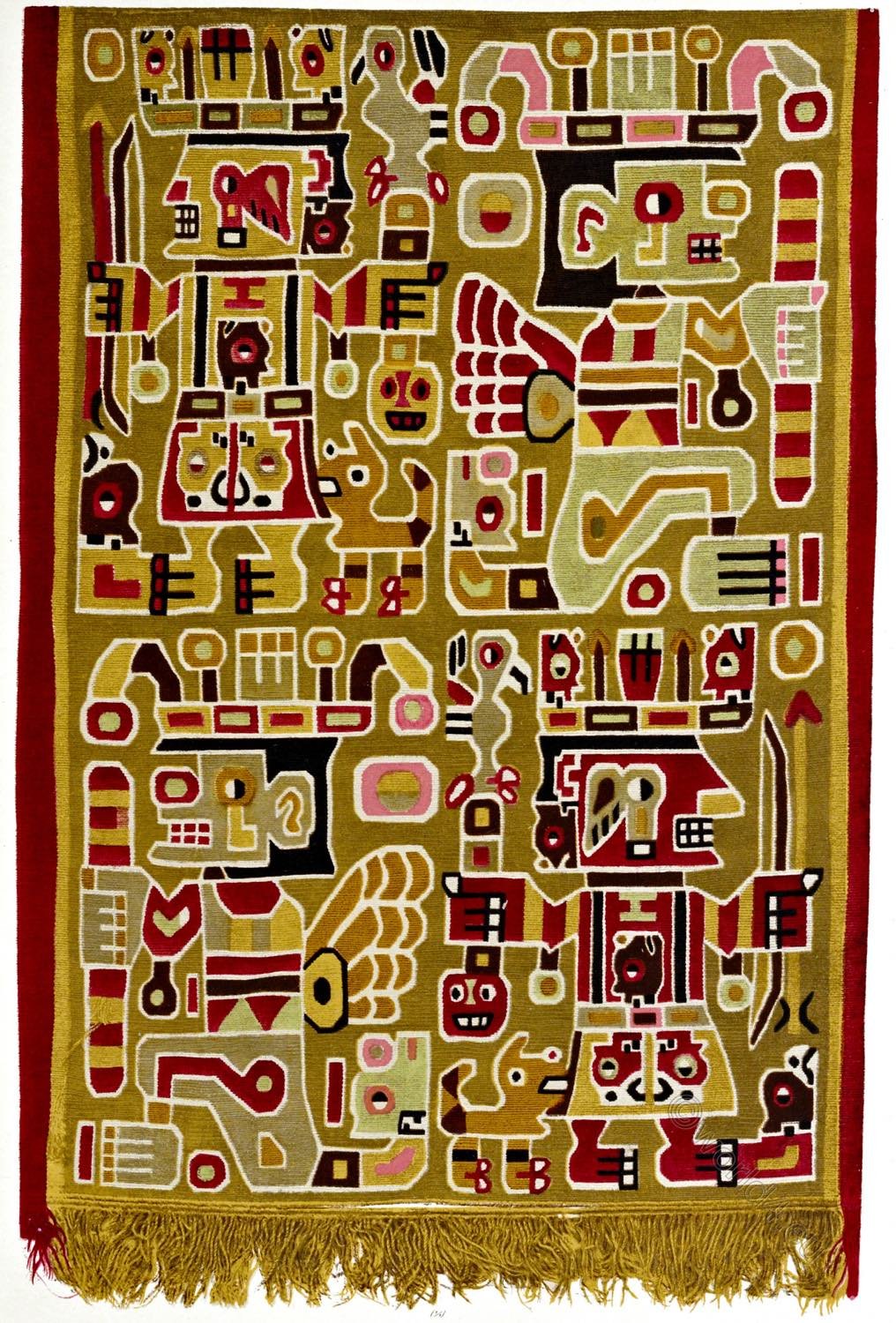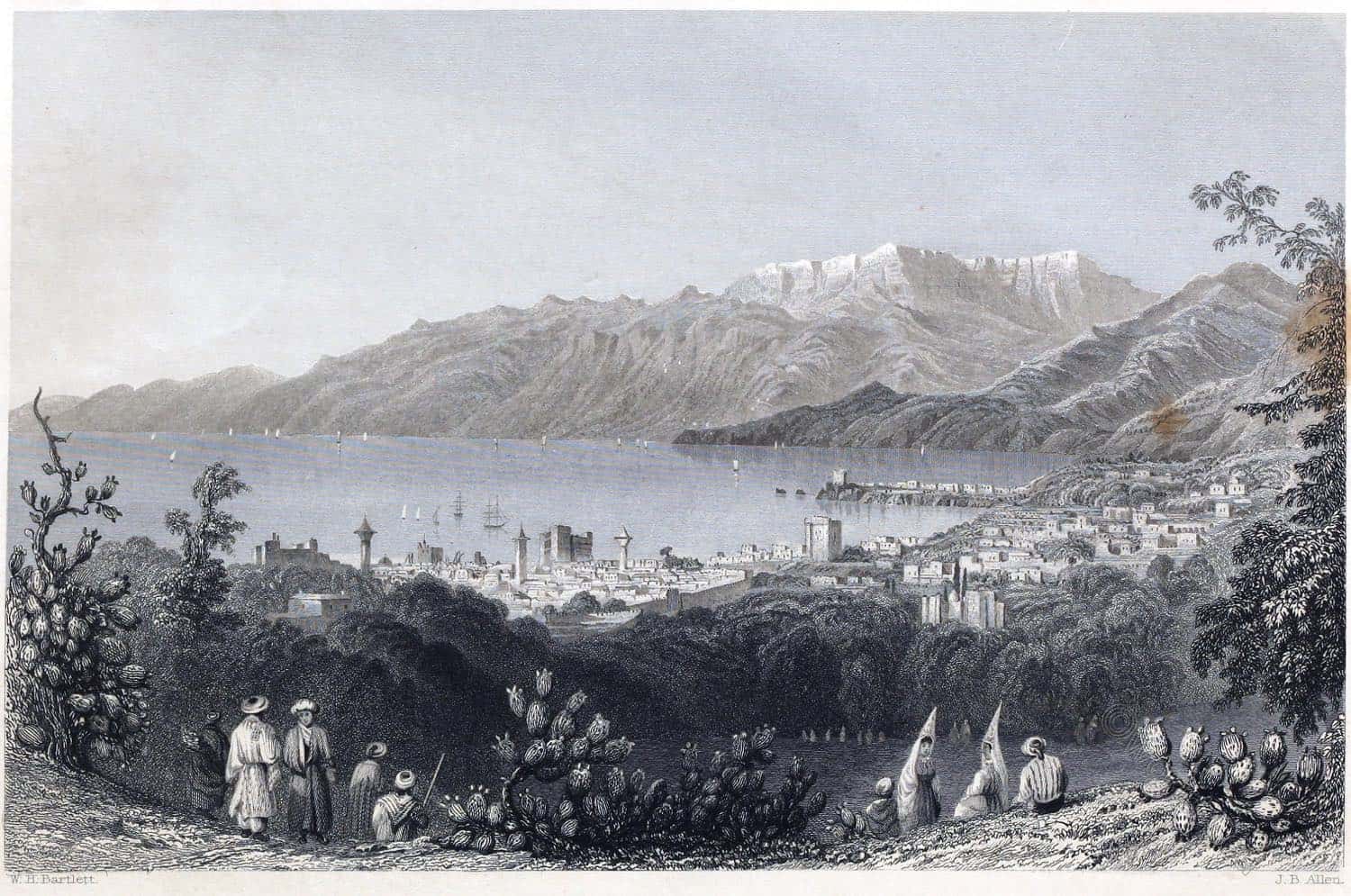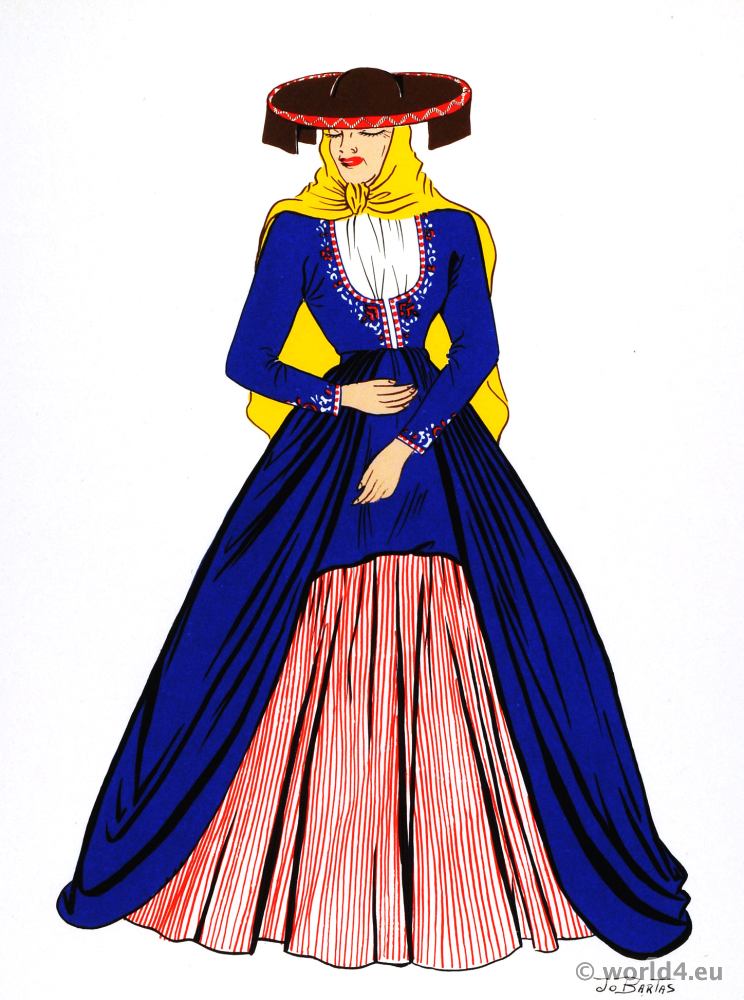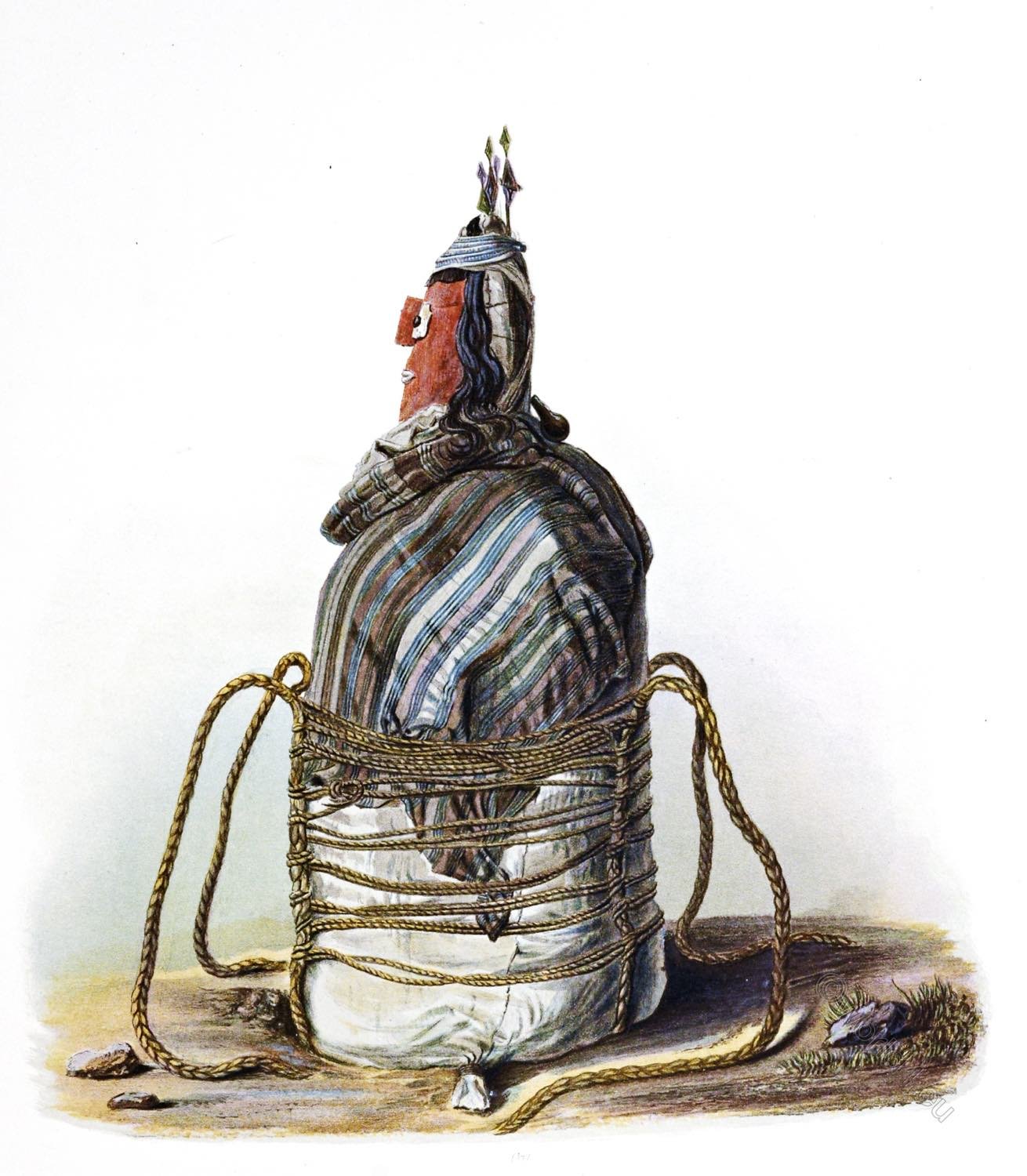
III. The Mummies in their diverse equipment.
SIDE VIEW OF THE MUMMY FIGURED ON PLATES 11 AND 12.
PLATE 13.
In the front view, plate 11, the full breadth of the mummy is made apparent. The present figure supplies the compliment needed to form a correct idea of its veal appearance. The thickness, or diameter front and back, is small compared with the breadth.
The disproportion is still greater in the case of the pillow forming the false head. The latter, whose details may be seen in plate 12, is here represented without its envelopments, thus giving striking prominence to the peculiarities of the vividly painted features. We also clearly see how the red-grass cordage was used in carefully lowering the body.
Within the mummy, in cerements illustrated further on (plates 17, 19, 20, 30) was found the body of an adult in a squatting posture, and on its head a small child wrapped in cloths.
PROPORTIONS (metres)
(to plates 11—13.)
Height of the whole mummy – 1,42
Height of the body – 1,00
Breadth across the shoulders – 1,0
Circumference of the whole mummy – 2,80
Diameter, front and back -0,55
Height of the head – 0,43
Diameter of the head – 0,20
Length of the club-shaped stick by the side of the mummy – 1,22
Source: The necropolis of Ancon in Peru: a contribution to our knowledge of the culture and industries of the empire of the Incas being the results of excavations made on the spot by Wilhelm Reiss (1838-1908); Alphons Stübel (1835-1904), joint author; Wilhelm Greve, lithographer; Augustus Henry Keane (1833-1912), translator; Ludwig Wittmack (1839-1929); Rudolf Virchow (1821-1902); Alfred Nehring (1845-1904). Berlin: A. Asher & Co.; New York : Sole agent for America, Dodd, Mead & Company, 755 Broadway, 1880.
Discover more from World4 Costume Culture History
Subscribe to get the latest posts sent to your email.

